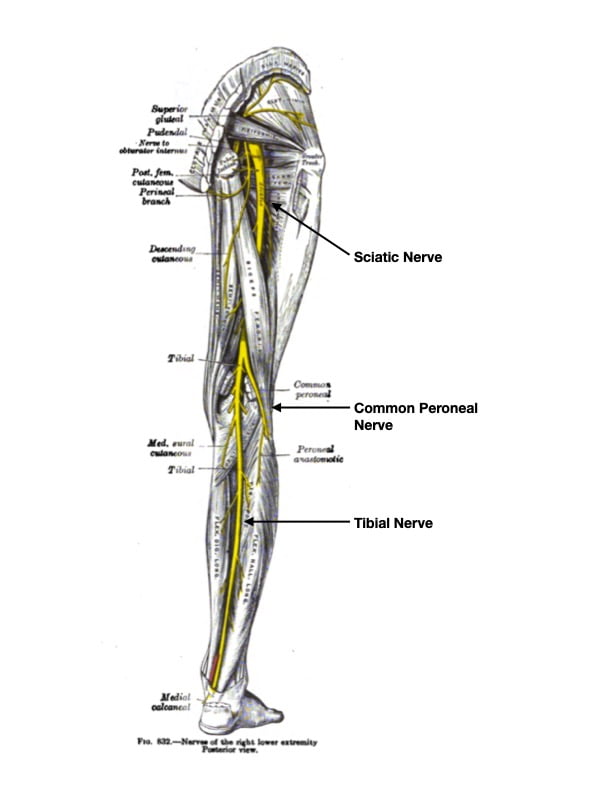Media error: Format(s) not supported or source(s) not found
Download File: https://massagelibrary.s3.us-west-1.amazonaws.com/s3fs-public/Sciatic%20Nerve%20Glide%20-%20Sitting.mp4?X-Amz-Content-Sha256=UNSIGNED-PAYLOAD&X-Amz-Algorithm=AWS4-HMAC-SHA256&X-Amz-Credential=AKIAV4HFKD7Q6MNN3QWS%2F20250402%2Fus-west-1%2Fs3%2Faws4_request&X-Amz-Date=20250402T185412Z&X-Amz-SignedHeaders=host&X-Amz-Expires=600000&X-Amz-Signature=a36e907f75de7e571fca974bc0eaa975d92a4c2ec3abc8279e97f8be87dfd32dDownload a pdf file with information about this technique
Caution:
When doing nerve glides or nerve flossing, it is very important that the work is pain-free.
It is possible to overdo this work, so go slow and do the nerve flossing just six times, followed by gentle tensioning of the nerve.
First tension the nerve, exploring how much range of motion your client has before they experience pain. Then glide the nerves in both proximal and distal directions six times. After that, you can tension the nerve again and note the increase in a pain-free range of motion.
Sciatic Nerve
The sciatic nerve is the longest nerve in the body. It originates with nerve roots L4 to S3 and passes through the greater sciatic notch. It goes under the piriformis muscle, and in some people, part or all of the sciatic nerve may go through the piriformis muscle. It passes over the other deep six muscles in the hip and goes down between the Adductor Magnus and the Biceps Femoris. It splits in two at the popliteal fossa to become the Tibial nerve and the Common Peroneal nerve.
Sensory Distribution
Calf – except for the medial side
The skin of the foot – except for the medial side
Tibial Nerve – The skin of the lower half of the back of the calf and the lateral border of the foot to the tip of the little toe
Peroneal Nerve – The skin of the upper third of the lateral aspect of the calf
Motor Distribution
Hamstrings
Adductor Magnus (partial)
Tibial n. – muscles in the posterior compartment of leg and sole of the foot
Common Peroneal n. – muscles in the anterior and lateral compartments of the calf
The Sciatic Nerve may be impinged at any of these places:
Foramen – L4 to S3
Piriformis
Quadratus femoris
Long head of Biceps femoris
Nerve Stretch
Hip and knee flexed
Slowly extend the knee and dorsiflex the ankle.
Client tucks chin
Nerve Glides
Proximal
The client tucks their chin and slumps forward.
The therapist allows the knee to flex and the ankle to plantarflex.
Distal
The client releases their chin tuck and straightens up.
The therapist extends the knee and dorsiflexes the ankle
Note: Sometimes, clients experience less pain with the neck flexed and more pain with the neck extended. In that case, the nerve glide must be adapted to flex the neck when the ankle is dorsiflexed. The reason for this is explained in a video with Stuart McGill.
Tibial and Peroneal Nerve Glides
Perform the nerve glides as for the Sciatic nerve, but with the following variations.
Tibial Nerve
Stretch with eversion and pronation of the ankle.
Peroneal Nerve
Stretch with inversion and supination of the ankle.
Related Techniques
Peroneal and Tibial Nerve Glides
Links to resources are on my blog page titled Resources For Nerve Entrapment Treatment.

